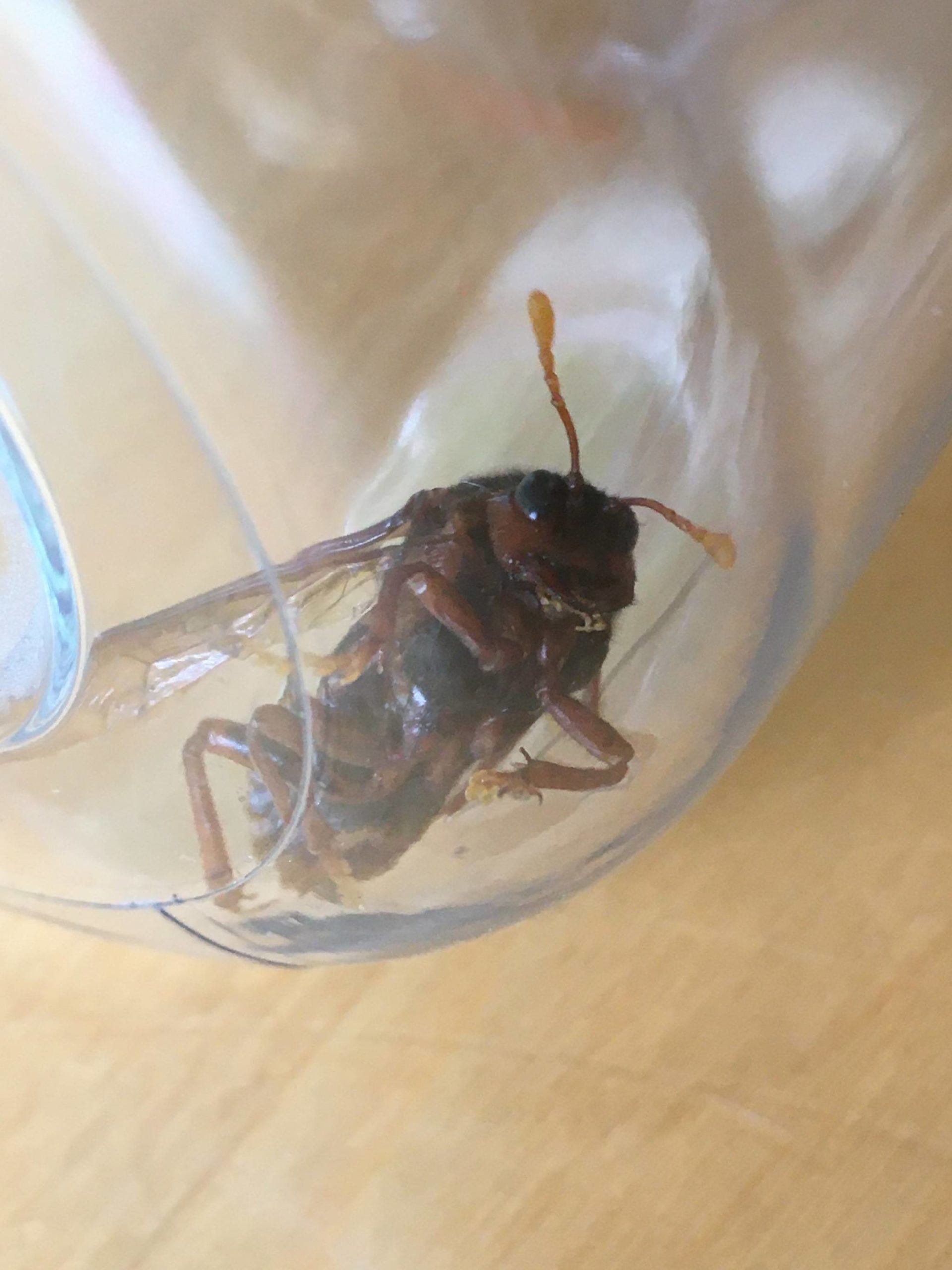Asian giant hornets, with their killer mandibles, sinister size and large orange heads, can wipe out an entire honeybee colony in a few hours.
They kill an average of 30 to 50 people a year in Japan.
The Washington State Department of Agriculture reported its first trapped specimen July 14 in a bottle trap near Birch Bay in Whatcom County, and last Wednesday (July 29), confirmed the find on its website.
Concerned that if the hornet is not stopped now, it could entrench itself so deeply that all hope of eradicating it would be lost, the WSDA has launched all-out hunt for the hornet — and enlisted hundreds of volunteers to set and monitor traps.
Retired Boeing engineer and outdoor enthusiast Scott Seagren responded to that call. In mid-June, the Auburn man decided to keep himself occupied during the pandemic, so he built three traps that had been specially designed in Japan, South Korea and other Asian nations to catch the hornet.
For five weeks, they sat without incident on his 5 acres off Green Valley Road.
Sometime after 9 a.m. last Saturday (Aug. 1), Seagren said, he and his setter, Robert, were walking along Birch Creek to check on the traps.
“It was after 9 a.m., and my dog tumed toward the hornet traps and went into a mode of hornet battle, which is what they do,” Seagren said. “I ran over thinking, ‘oh my god, what is that he’s stepped on,’ and I checked to see if he had been stung.”
What he saw made him jump.
“A huge, hornet-like creature,” Seagren said, “an inch-and-half, maybe three quarters of an inch long, and it was not like any hornet I’d ever seen. It had a pumpkin orange head and black eyes, orange legs and everything.”
Given every indication that what he had fit the description of the murder hornet, he called the WSDA. He also submitted a report and photos like volunteers are directed to do when they’ve spotted something unusual.
To date, the WSDA has yet to confirm the bug’s ID. But in the days since, Seagren’s own research has nearly convinced him it was not the Asian hornet.
“We still don’t know for sure what it is, but I’m 99.9 percent sure it is what’s called an elm sawfly. Because of the colors, the orange head and everything about it. I believe this one’s a female, we still have her alive here. I’m sure the agricultural people are going to come back and say, ‘Yeah, you’re probably right, it’s not a hornet but probably an elm sawfly,’ which is most easily misidentified as a murder hornet. We’ll see. I haven’t had any other sightings in my traps.”
Elm sawflies are not true flies, but big, intimidating fly-like wasps that could resemble a vengeful hornet to the novice eye, with dark wings, blackish-bluish coloring on the back of their abdomen, orange antennae and a white spot at the base of the thorax. They lack the “waist” between abdomen and thorax that most wasps have.
“We really didn’t want it to be a murder hornet. That’s the last thing we want here in this valley,” Seagren said. “So far we’re good to go. Nobody else has called about it either. That’s a bit surprising because there are hundreds of hives and apiaries up and down the whole valley.”
Given the concern, Seagren wishes there had been an easier way for him to identity what he had.
“When you get online, you can find a lot of resources, good news and bad news, about the murder hornet, tongue-in-cheek and otherwise. But if you try to find what else it could be misidentified as, that’s harder to find. We spent four hours on the internet looking at all the comparisons of every kind of hornet or wasp it could possibly be and the ones that are normally misidentified. And the elm sawfly looks just like a murder hornet, maybe a quarter inch smaller, but it’s a big bug,” Seagren said. “And it’s a nasty looking sucker.”


